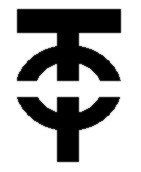Todt Organization (TO)
The Atlantic Wall in Normandy

![]() The badge of the Todt Organization
The badge of the Todt Organization
- At the origin of the Todt Organization
The Todt Organization, founded as such in 1938, is the origin of the Atlantic Wall. It was a civil engineering organization working for the Nazi Third Reich throughout the occupied territories during World War II. Todt is named after the German engineer and politician who was in charge of it, Fritz Todt, a member of the Nazi party who died in a plane crash in February 1942.
Construction of a fortification of the Atlantic Wall by the Todt Organization (Bundesarchiv)
Before the Second World War, from 1933 to 1938, Fritz Todt, as General Inspector of German Roads, developed a large number of infrastructure and equipment projects for the German territory, initiating the work on the famous freeway networks that were later used for troop and armoured vehicle movements. The beginning of the Second World War marked the exclusive specialization of the Todt Organization in the military field. Before 1940, 1,750,000 German workers were assigned to carry out the necessary work for the Reich. From 1942 onwards, when Albert Spehr took over from Fritz Todt as head of the organization, most of the work was done by prisoners of war and locally recruited civilian workers. It was also at this time that the OT was subordinated to the Ministry of Armaments and War Production (Reichsministerium für Rüstung und Kriegsproduktion) until 1945.
Construction of a fortification of the Atlantic Wall by the Todt Organization (Bundesarchiv)
- Construction of the Atlantic Wall
Following the unsuccessful attempt to invade England in 1941 (Operation Seelöwe), Hitler decided to fortify the coasts of northwestern Europe, from Norway to the Spanish Basque Country and in the Mediterranean from 1942 onwards: hundreds of pillboxes and reinforced concrete were built by the OT, accompanied by minefields, thousands of kilometers of barbed wire, machine gun and flame thrower nests, beach defences, anti-tank ditches… Coastal batteries, armed with heavy guns, were built at key points along the coast, protecting harbours and estuaries.
The OT uses a framework of typical fortifications that are adapted to the terrain used. The same buildings are designed by the workers with very few differences depending on the construction site. Although it was most often draft dodgers and prisoner soldiers who participated in the work, the Germans also called on local volunteers who were paid.
Thus, in France, members of the resistance were hired as workers: some took advantage of this situation to establish precise surveys of German defensive positions and then sent them to England by carrier pigeons, while others secretly placed sugar in the concrete mixers, a process that made the constructions less resistant to bombing.
- An all-purpose paramilitary company
Although the OT was a civilian entity, it was nonetheless subordinate to the military. Thus, until the end of the war, it adopted a hierarchical and paramilitary structure: the workers wore uniforms with stripes and different types of ranks.
Construction of a fortification of the Atlantic Wall by the Todt Organization (Bundesarchiv)
The OT was not limited to the construction of the Atlantic Wall: it was also involved in the development of launch pads for the V1 and V2 missiles, anti-aircraft facilities, refineries and underground weapons factories, and the restoration of German cities destroyed by bombing.
At the end of the war, the working conditions of the workers deteriorated rapidly. The quantity of manpower decreased, as the need for soldiers was greater than the need for workers. Until 1945, the OT called on prisoners from concentration camps for the last jobs ordered by the Reich before its collapse.
Remains of the Wn 66 strongpoint visited by an American soldier after the landing (US Archives)
 German coastal artillery in Normandy German coastal artillery in Normandy |
 Todt Organization Todt Organization |
 German strongpoints in Normandy German strongpoints in Normandy |
 Bunkers typology Bunkers typology |
![]() Back to the menu Atlantic Wall in Normandy
Back to the menu Atlantic Wall in Normandy





